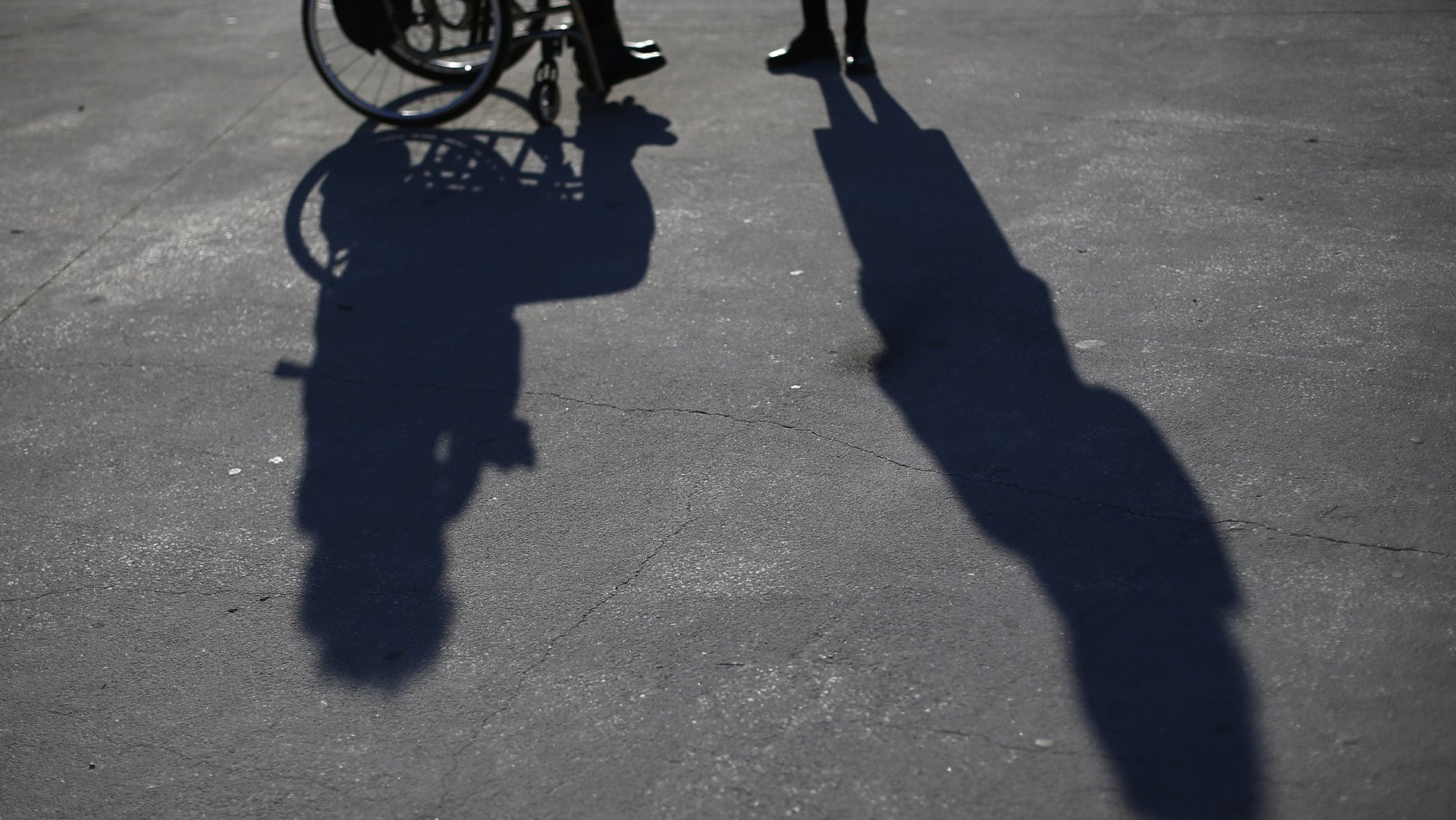In the US, people with disabilities are three times as likely to be victims of serious violence
People with disabilities who live in the US are two-and-a-half times as likely to be victims of violent crimes than those without disabilities—and three times as likely to be targets of rape, robbery, or aggravated assault.


People with disabilities who live in the US are two-and-a-half times as likely to be victims of violent crimes than those without disabilities—and three times as likely to be targets of rape, robbery, or aggravated assault.
New data from the federal Bureau of Justice Statistics (BJS) explores this disparity for the period between 2011 and 2015. According to the US Census Bureau’s American Community Survey, 14% of the US population over 12 years of age has a disability. A large proportion of this group is elderly—42%, compared to 12% of the general population—and the BJS data is adjusted for age distribution.
The rate of so-called “violent victimization” for those with disabilities is 32.3 per 1,000, compared to 12.7 per 1,000 for those without. For the most serious violent crimes, the disparity is even starker: 12.7 per 1,000 versus 4 per 1,000.
There were significant differences in the targets of crimes when it comes to the disability types, which are classified in the following way by the BJS:
Disabilities are classified according to six limitations: hearing (deafness or serious difficulty hearing), vision (blindness or serious difficulty seeing, even when wearing glasses), cognitive (serious difficulty in concentrating, remembering, or making decisions because of a physical, mental, or emotional condition), ambulatory (difficulty walking or climbing stairs), self-care (a condition that causes difficulty dressing or bathing), and independent living (physical, mental, or emotional condition that impedes doing errands alone, such as visiting a doctor or shopping).
The perpetrators of the crimes committed against people with disabilities were more likely to know them well or be casual acquaintances—40% versus 32% for the attackers of other types of victims.